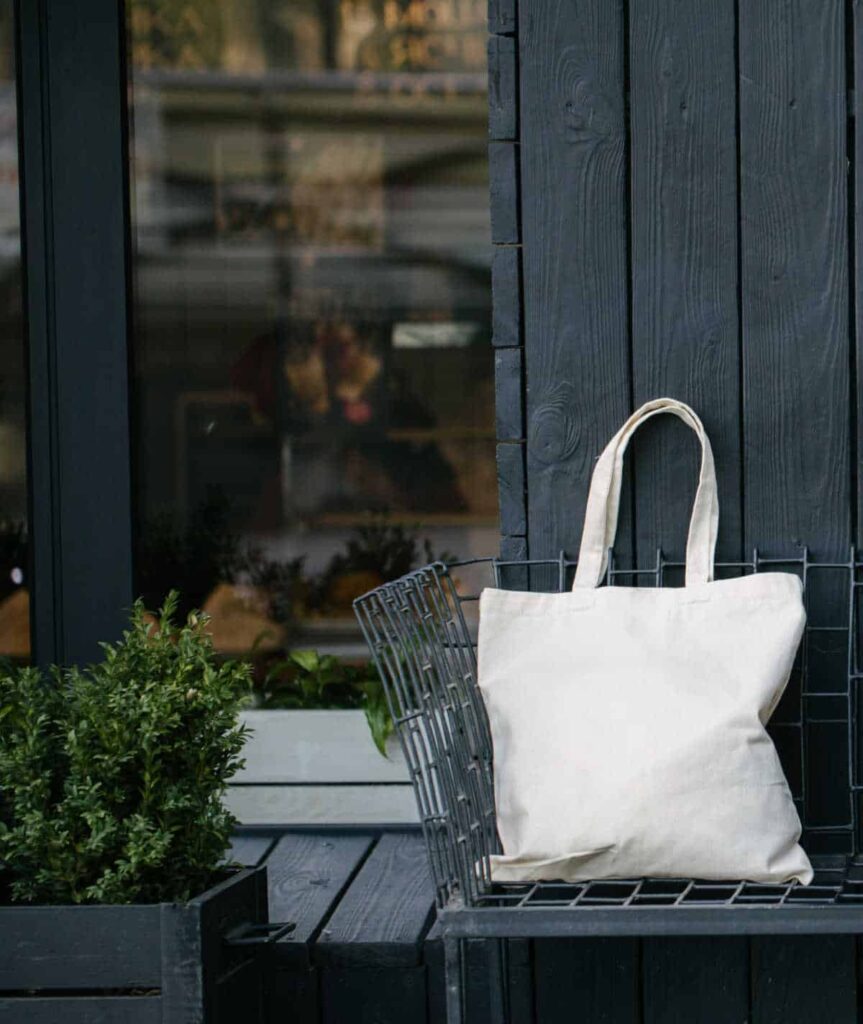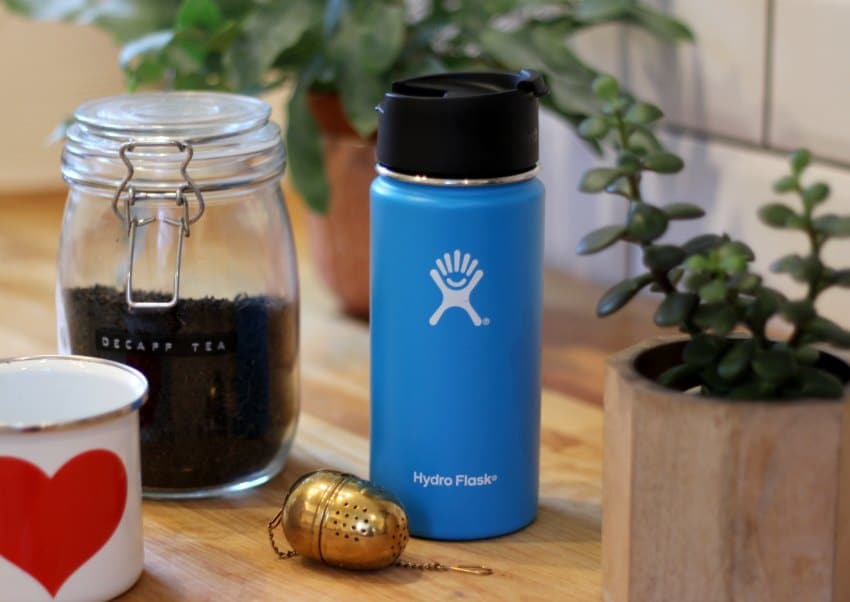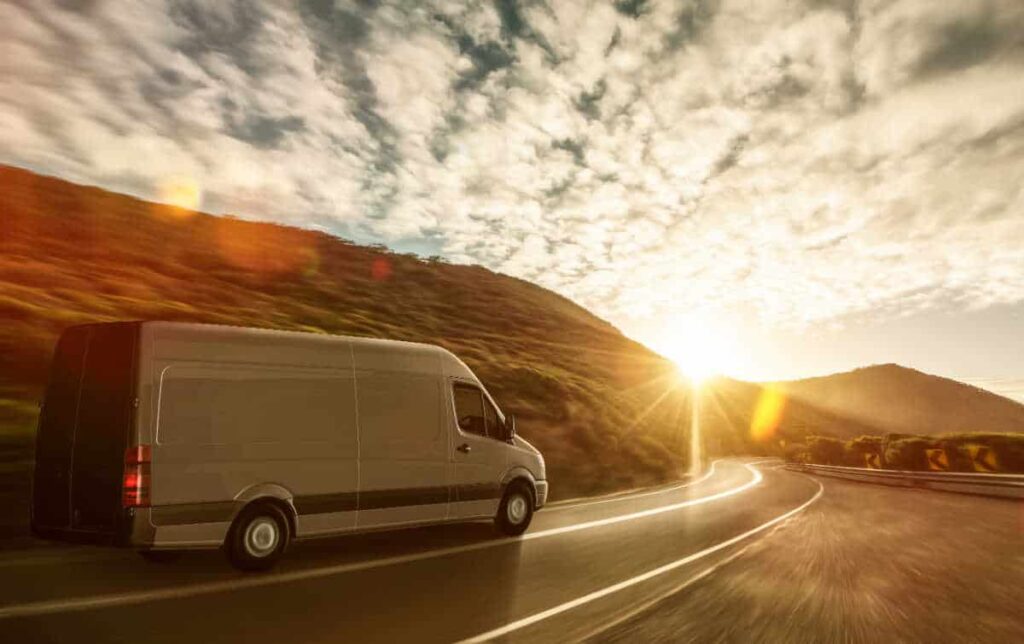How To Talk About Climate Change to Children
To support the running costs of Moral Fibres, this post contains affiliate links. This means Moral Fibres may earn a small commission, at no extra cost to readers, on items purchased through these links.
Talking to children about climate change can be daunting. Where to start, what to say, what to do, it can be tough figuring it all out. Here are some hints and tips from parents who have been there before, as well as some useful climate change resources for you and your kids.
In the early years, I thought I had parenting all figured out. Reusable nappies, check. Wooden toys, check. Reusable baby wipes, check. Hand-me-down baby clothes, check. What more could there be to bringing up a child in an eco-conscious way?
Then my kids started to grow up, and now I have a 12-year-old and an 8-year-old on my hands. They are influenced by what their friends are doing, what they see on TV and social media, and more. It makes green parenting much harder than I ever could have imagined.
And then there’s the responsibility of talking to your children about big issues, such as climate change. That certainly wasn’t in any parenting manual I came across.
How To Talk To Children About Climate Change
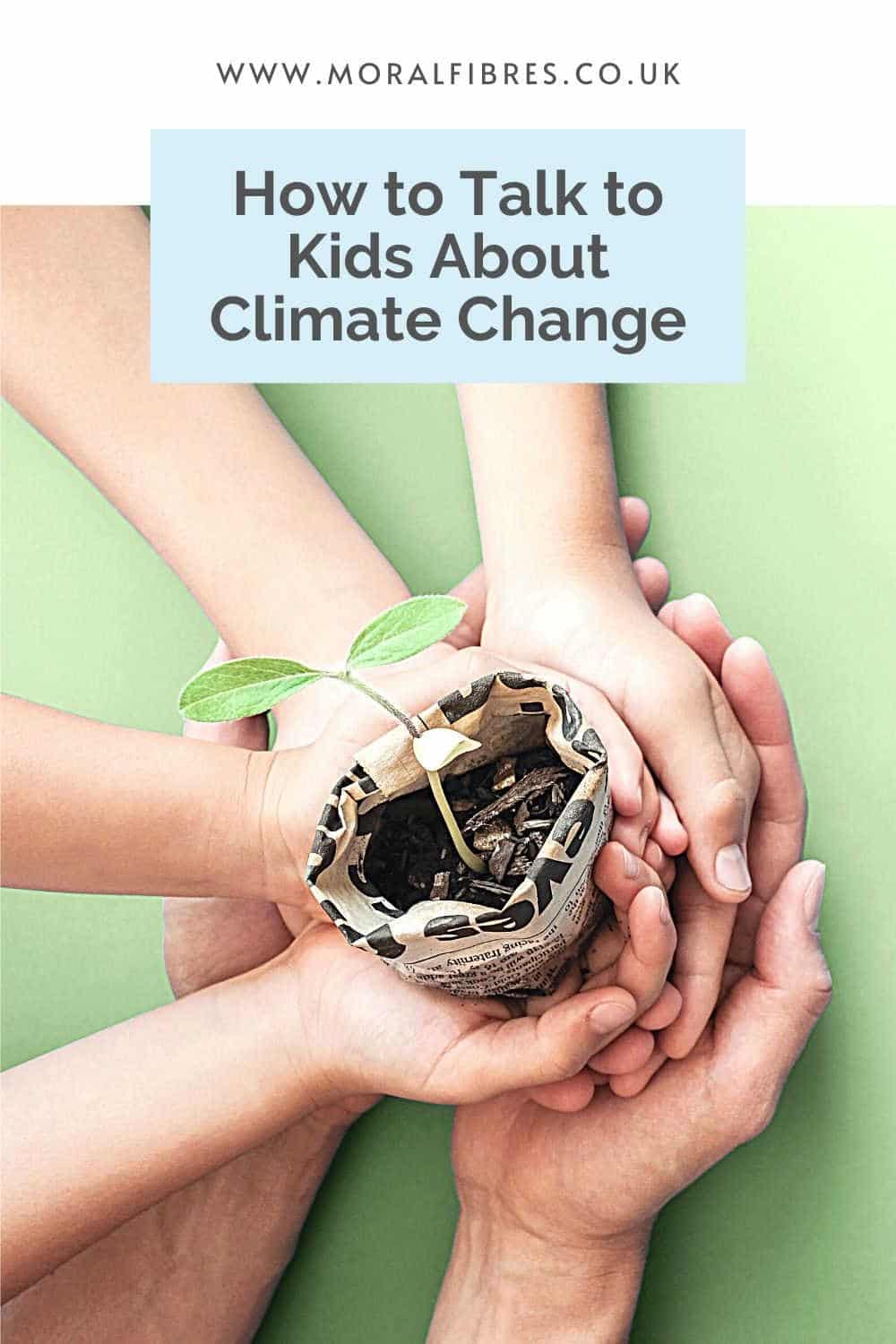
It can be daunting talking to your kids about an issue as big, complicated, and scary as climate change. However, here are some tips about chatting to them about climate change at any age that will hopefully help make it less daunting for you.
I’ve also got some resources for you if you feel like your knowledge is lacking. And I’ve got child-centric climate change resources for your kids if they want to learn more at their own pace.
Use the quick links to jump to a specific section of this post, or keep scrolling for the full guide:
- Tailor Your Approach
- Make Your Daily Life A Learning Experience
- Focus On Action And Hope
- Make It Clear The Grown-Ups Are Responsible
- Keep It Local
- Nurture A Love of Nature
- Watch The News
Tailor Your Approach
When I talk to my kids, I tailor my approach to make it age-appropriate. What I talk to my 12-year-old about climate change isn’t necessarily what I talk to my 8-year-old about.
With my 8-year-old, we chat more about nature and the environment. We chat about things that harm the environment, and positive things we can do to help the environment.
I’ve also found it’s easy to talk about changing weather patterns and how that links to climate change without going too far over her head. More rain and more wind is an easy one to understand, that can be done without it sounding too scary.
My 12-year-old knows and understands a lot more, so we chat about more in-depth issues when she wants to. Sometimes she’ll come to us with questions about climate change or sustainability, that we try to answer truthfully to the best of our knowledge.
That being said, you might be surprised by what your child already knows or understands about climate change. If your kids are older, ask them what they already know. It can be a great starting point for you to chat a little more.
Make Your Daily Life A Learning Experience

You don’t have to go straight into the climate change chat head first. Instead, I started when my kids were toddlers by trying to make our daily life a learning experience.
It can vary depending on your life, and the things you do. How it looked for us is that I would chat to my kids on the walk to school about why walking is great for us and great for the environment. When we took the bus, train, or tram, it was a great time to chat about why public transport is better for the environment than taking the car. I got my kids to help me wash our reusable products, and I would chat about why reusable products are better for the environment than single-use.
Every experience can be a learning opportunity or a conversation starter. By equipping your kids with this knowledge about positive environmental changes, you can have more age-appropriate discussions about larger climate change issues later.
Focus On Action And Hope
I talked to Jen Gale, writer of the site Sustainable(ish) and author of the brilliant The Sustainable(ish) Guide to Green Parenting, about chatting to kids about climate change. One of her top recommendations that I love is focusing on action.
Jen says: “It’s very easy to get paralysed and overwhelmed. Focus on the things that you can do as a family, and especially if there’s anything that they can take ownership of at the age they are.”
Jen also recommends turning to the famous Fred Rogers quote, which says “Look for the helpers. You can always find people who are helping”. In the case of climate change, Jen recommends focusing on the positive stuff that other people are doing around the world.
Jen says “There are so many amazing and inspiring stories out there to share.” Bringing hope to your climate change conversations can help kids avoid feelings of overwhelm, and helps them to focus on solutions.
Make It Clear The Grown-Ups Are Responsible
Something I am hyper-keen to instil in my children is that it isn’t kids who are responsible for taking action on climate change. Whilst the media likes to focus on young climate activists, as a parent I feel that many children unfairly take the burden when it comes to demanding action when it’s us adults that really need to step up.
I want my kids to have a childhood. So I make a point of talking to them about the adults and organisations doing great things for our planet and for people. I talk about local climate community work. And I talk to my kids about personal choices that my partner and I make. This includes walking and using public transport where we can, not eating meat, using ethical banks that don’t fund fossil fuels and voting for parties with green policies.
Keep It Local
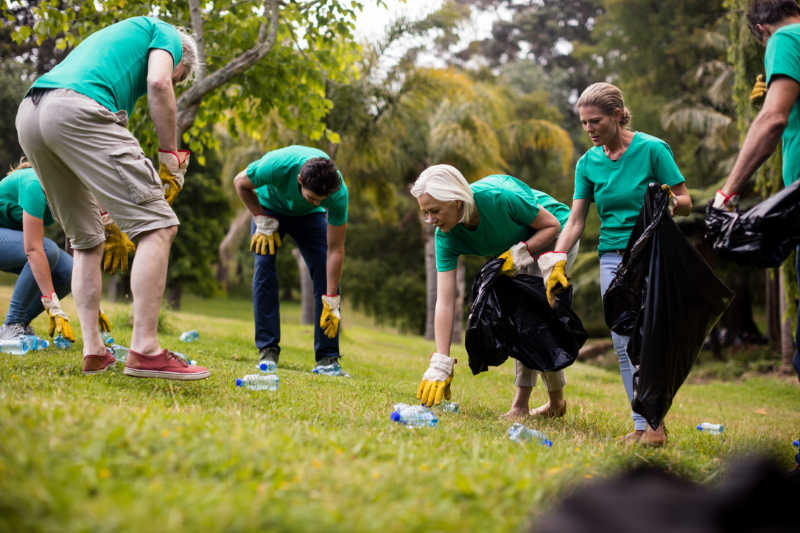
When talking to young children about climate change, Jen also recommends keeping things local and tangible.
Jen says “It’s hard enough for us as adults to grasp that turning our lights off might make a difference to the size of the polar ice cap, let alone for our kids. Things like litter picking are great, as it’s really easy to see both a cause and effect. You also feel like you’ve made a real difference. Dare I say it, it can also be quite fun too..!”
As a little 8-year-old, litter picking was the first environmental activity I took part in. It definitely helped me establish the cause and effect that Jen talks about. This simple activity led me to want to learn more about the environment and ways to help. Being able to physically show them that other people are working towards a common goal can help give them encouragement and hope.
Alternatively, follow any local environmental charities on social media. You can then look out for local family-friendly events that they might organise that you can take part in.
I’ve also taken my kids along to climate marches before. Something like this may or may not be suitable or accessible for you and your kids. However, I found it was a great way to tangibly demonstrate that it’s not just our family who are concerned about the climate.
Nurture A Love of Nature
Even if your kids are too young to talk about climate change, you can help spark a love of the environment by nurturing a love of nature.
Jen says “We only protect what we love, and kids are fascinated by the world around them from a very young age. Nurture that natural curiosity. Point out nature when you see it, note the changing seasons, and talk about how you can encourage more wildlife into your garden if you have one. There’s a great free app called ‘Seek’ from The WWF that allows you to take pictures of any plants, bugs, or animals you see and then IDs them for you. My kids love using this.”
I’ve also put together a really fun post on amazing facts about nature – with lots of videos that kids may love. My kids have loved learning about how bees dance to communicate, and how manatees fart to control their buoyancy!
Watch The News
What also got me interested in all things environmental was my dad’s viewing habits. You see, whenever he was home from work, he always had the news on.
Seeing and hearing all this news from a young age really helped me connect the dots between the impacts of man and climate change.
Now, I don’t shy my kids away from the news. I find it good for them to know what’s going on in the world, within reason. They watch Newsround at school, which provides kid-centric news, without shying away from big issues. Then we chat about the news at home. Chatting about what they’ve seen on the news, helps them process what they’ve seen. And for climate change stories, it can help to discuss this further with adults rather than internalising negative emotions.
Useful Climate Change Resources For Children (And Adults!)

It can be daunting talking to kids about climate change. Especially if you don’t feel like you have the knowledge to be able to do so. Thankfully there are some really useful kid’s climate change resources that you can tap into, or let your kids have a look at by themselves.
Climate Change: The Facts
Whilst you certainly don’t need to have all the answers before you chat with your kids, you might find it helpful to have a little background knowledge.
If you need an easy-to-understand primer about climate change, then watch David Attenborough’s Climate Change: The Facts first. This is a no-nonsense guide to climate change that makes it easy to understand the causes of climate change and its impacts, as well as things we can do.
For older kids, it’s also a great introduction to climate change. My daughter watched this at 8 and it didn’t terrify her. However, I’d recommend watching it first before you decide if it’s suitable for your kids.
BBC Newsround
BBC’s Newsround has a useful short introduction to climate change. This can make for a great starting point for a conversation.
WWF
For kids aged 7 to 11, the WWF has a useful and free climate change pack for teachers. It is full of useful climate change talking and learning points. Plus you don’t have to be a teacher to access it.
NASA’s Climate Kids
NASA has a really great website devoted to teaching kids about climate change and getting them talking. Here you’ll find games, activities, videos, and the answers to big climate change questions. From explaining what the greenhouse effect is, to how do we know the climate is changing, to the difference between weather and climate, and explaining what is climate change, it’s all here for kids to explore at their leisure.
Looking for more resources? Check out my top environmental websites for children that are great at helping explain big issues around climate change, and nurturing a love of nature, in really fun and engaging ways.
And do you have any other tips about talking to children about climate change? Please do share in the comments below.
Found this post useful? Please consider buying me a virtual coffee to help support the site’s running costs.


